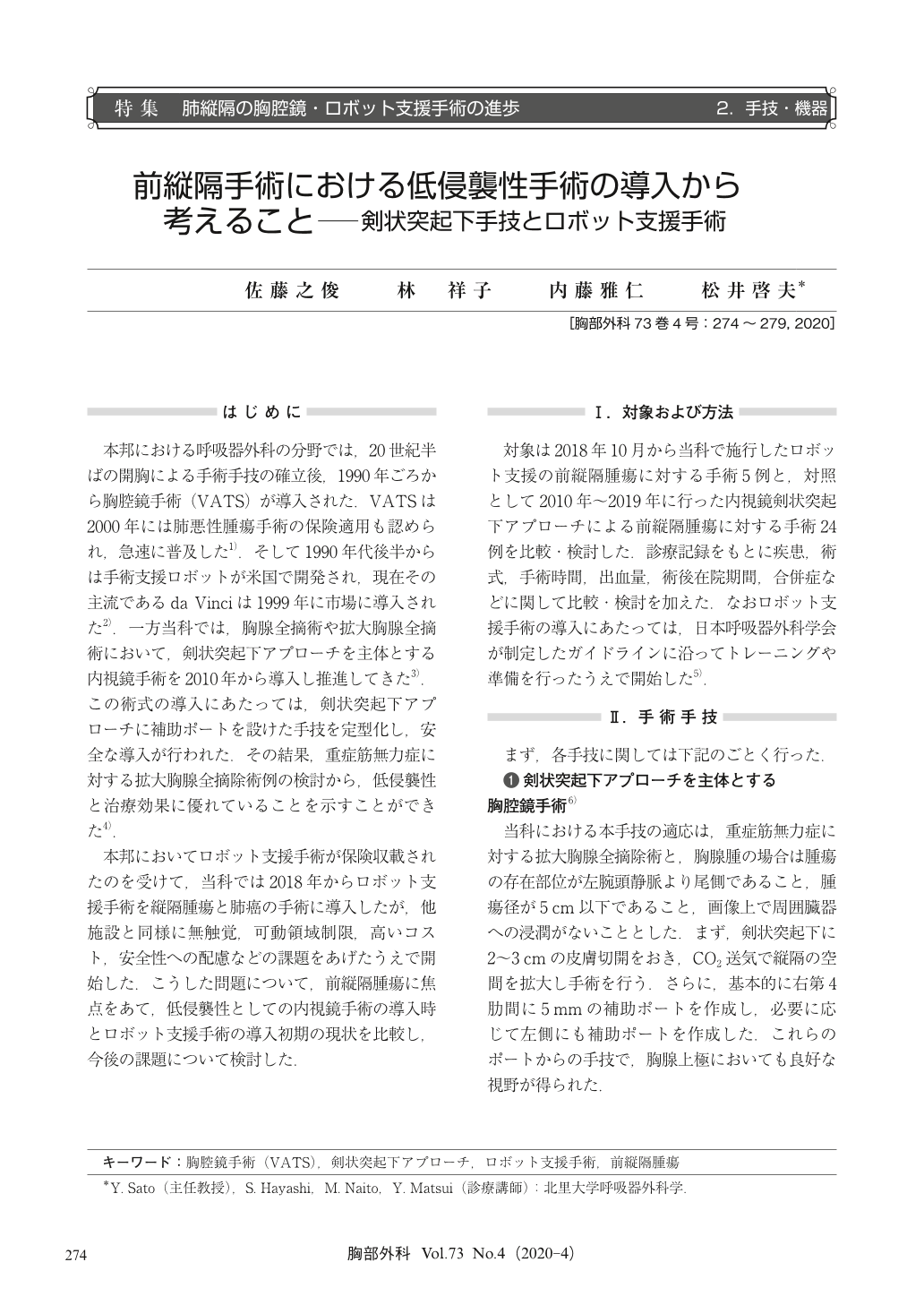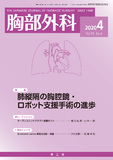Japanese
English
- 有料閲覧
- Abstract 文献概要
- 1ページ目 Look Inside
- 参考文献 Reference
本邦における呼吸器外科の分野では,20世紀半ばの開胸による手術手技の確立後,1990年ごろから胸腔鏡手術(VATS)が導入された.VATSは2000年には肺悪性腫瘍手術の保険適用も認められ,急速に普及した1).そして1990年代後半からは手術支援ロボットが米国で開発され,現在その主流であるda Vinciは1999年に市場に導入された2).一方当科では,胸腺全摘術や拡大胸腺全摘術において,剣状突起下アプローチを主体とする内視鏡手術を2010年から導入し推進してきた3).この術式の導入にあたっては,剣状突起下アプローチに補助ポートを設けた手技を定型化し,安全な導入が行われた.その結果,重症筋無力症に対する拡大胸腺全摘除術例の検討から,低侵襲性と治療効果に優れていることを示すことができた4).
In Japan, robot-assisted surgery for malignant lung tumors, benign mediastinal tumors, and malignant mediastinal tumors has been covered by the national health insurance since 2018. Hence, the number of domestic robotic surgical procedures is increasing. Recently, we introduced endoscopic surgery such as video-assisted thoracoscopic surgery (VATS) via a subxiphoidal approach for thymectomy. Here, we compared VATS and robotic surgery via a subxiphoidal approach in terms of clinical factors. During the study period, 5 consecutive patients who underwent robotic thymectomy and 24 patients who underwent VATS were analyzed. Although the operative time was longer in the robotic group, the intraoperative blood loss, postoperative length of stay, and postoperative complications were favorable in the robotic group. The disadvantage of robotic surgery is the necessity for a reduction in operative time including console duration time. However, future developments in the field of robotic engineering will lead to the creation of systems that allow for more advanced surgical techniques. We must chose procedures in consideration of the best method for each patient, and it is necessary to perform robotic surgery based on the expense and therapeutic effect, social environment, and way of life of each patient.

© Nankodo Co., Ltd., 2020


